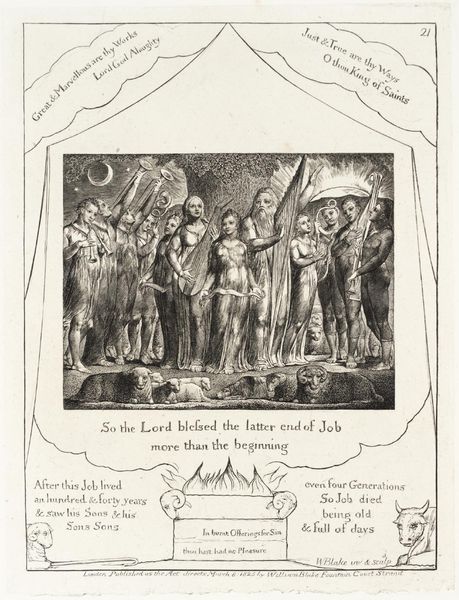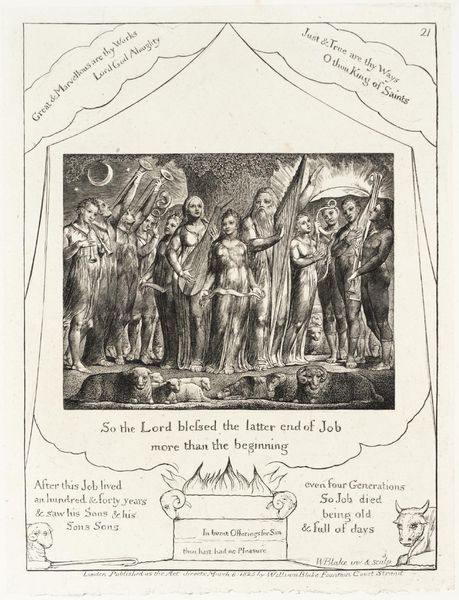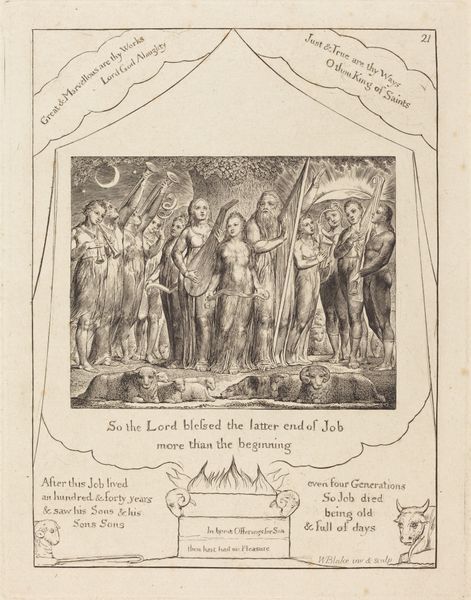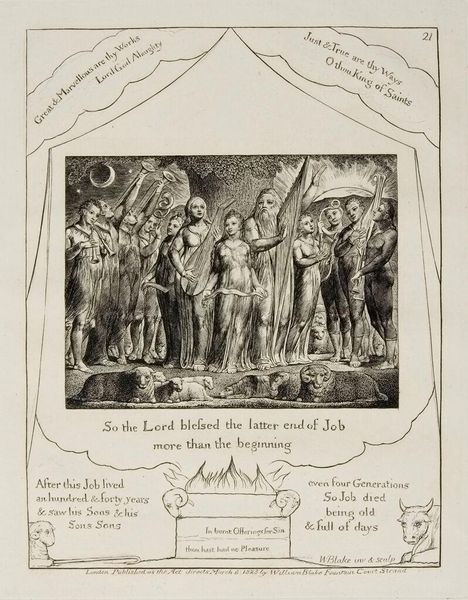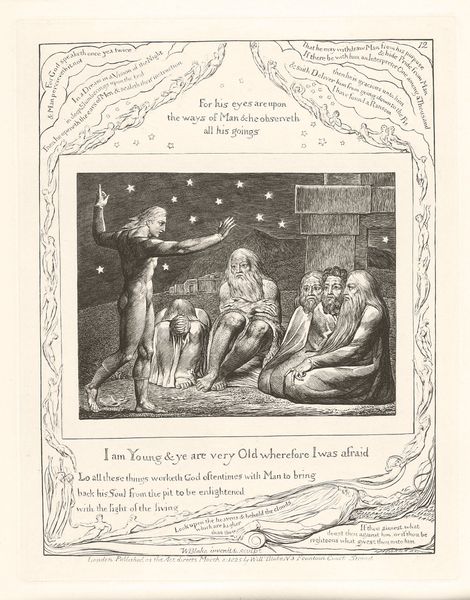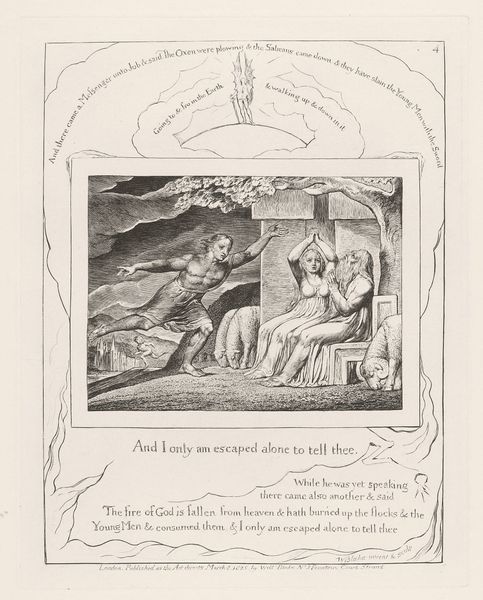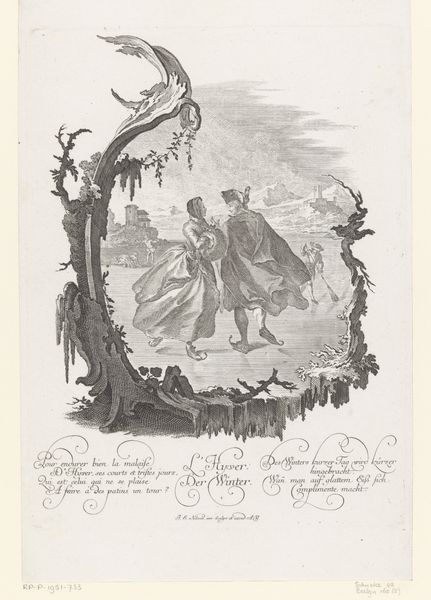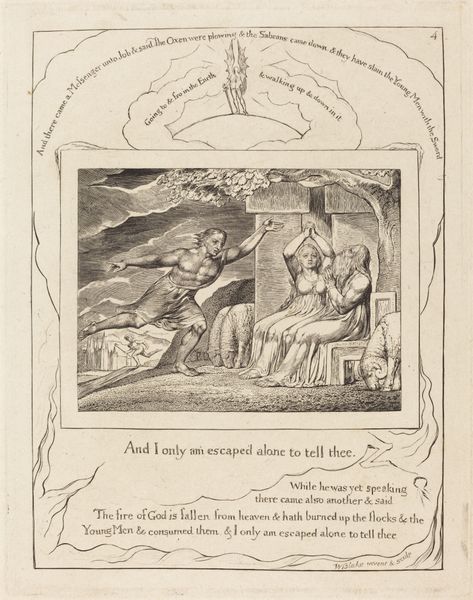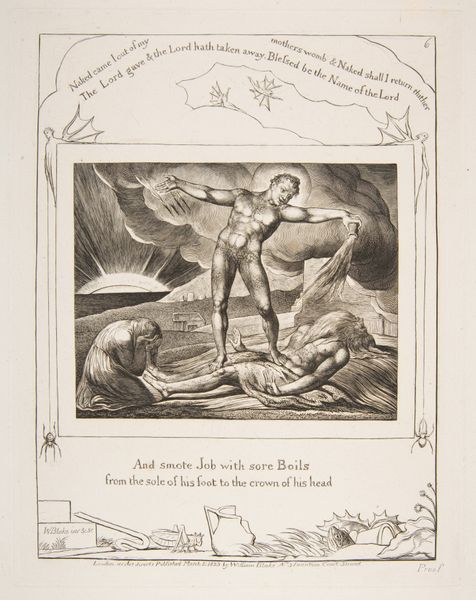
So the Lord blessed the latter end of Job more than the beginning 1825
0:00
0:00
print, engraving
# print
#
figuration
#
romanticism
#
line
#
history-painting
#
engraving
Dimensions: 8 1/2 x 6 5/8 in. (21.59 x 16.83 cm) (sheet)
Copyright: Public Domain
Curator: It's impossible to approach a work like this without being overwhelmed. It’s “So the Lord blessed the latter end of Job more than the beginning,” an engraving created by William Blake in 1825. It's currently held at the Minneapolis Institute of Art. Editor: My immediate feeling is…triumph! A complex visual resolution. The characters emerge from what looks like profound shadow, yet there’s light, a sense of lightness as they’re bathed in… what is it? Divine grace, perhaps? Curator: Definitely grace. Blake, always deeply invested in the spiritual, is illustrating a scene from the Book of Job. It showcases Job's restored blessings after enduring immense suffering. Contextually, this reflects Blake's own beliefs regarding spiritual trials and redemption, and broader Romantic notions surrounding emotion and individualism. Editor: Thinking about Job, what interests me most is how this image can act as a meeting point between religious trauma and queer theory. Job is dispossessed of family, safety, social position; his body suffers greatly. His queerness—his vulnerability—pushes the boundaries of conventional identity and acceptance. Curator: That's a beautiful interpretation. Blake often challenged societal norms, both visually and conceptually. His emphasis on spiritual and emotional experiences aligns with a rejection of purely rational thought prevalent at the time. Editor: Exactly! And, for me, the lines that compose this image contribute to the sense of vulnerability. This print visualizes the beauty that can arise from those challenges, but in doing so he also honors the wounds…he honors the scar. Curator: Yes. It reminds me that sometimes blessings aren’t about erasing the past, but about what grows from it. Thank you for pushing me to reflect on these ideas; it's such a gift to really observe and to feel this piece with you. Editor: Absolutely. Engaging with artwork in this way is more than art appreciation; it's a political act of acknowledging ourselves, as humans and thinkers. What remains with me is the radical thought of experiencing blessings, not in spite of pain, but alongside it.
Comments
minneapolisinstituteofart almost 2 years ago
⋮
In the last segment of the Job saga, the long night is over and the sun rises. In the west is the moon, attended by two stars, one of which is the moving star Lucifer. Job's manhood, purged of all error, is now complete, and his wealth is doubled (Job xliii: 10). The whole family is reunited in harmony; the sons and daughters are restored. They no longer kneel nor are they silent. They and their parents praise the Lord with musical instruments formerly hung on the tree. The books of law have disappeared. The three arts join in the celebration: the daughter on the right plays a lyre (music), and the daughter in the foreground sings from a scroll (poetry); the slender book held by the daughter to the left represents painting. The Justice of the Old Testament are the Mercy of the New are invited: "they sing the song of Moses the servant of God, and the song of the Lamb, saying, Great and marvelous are the works, Lord God Almighty; just and true are thy ways, thou King of saints." (Revelation xv: 3)
Join the conversation
Join millions of artists and users on Artera today and experience the ultimate creative platform.
